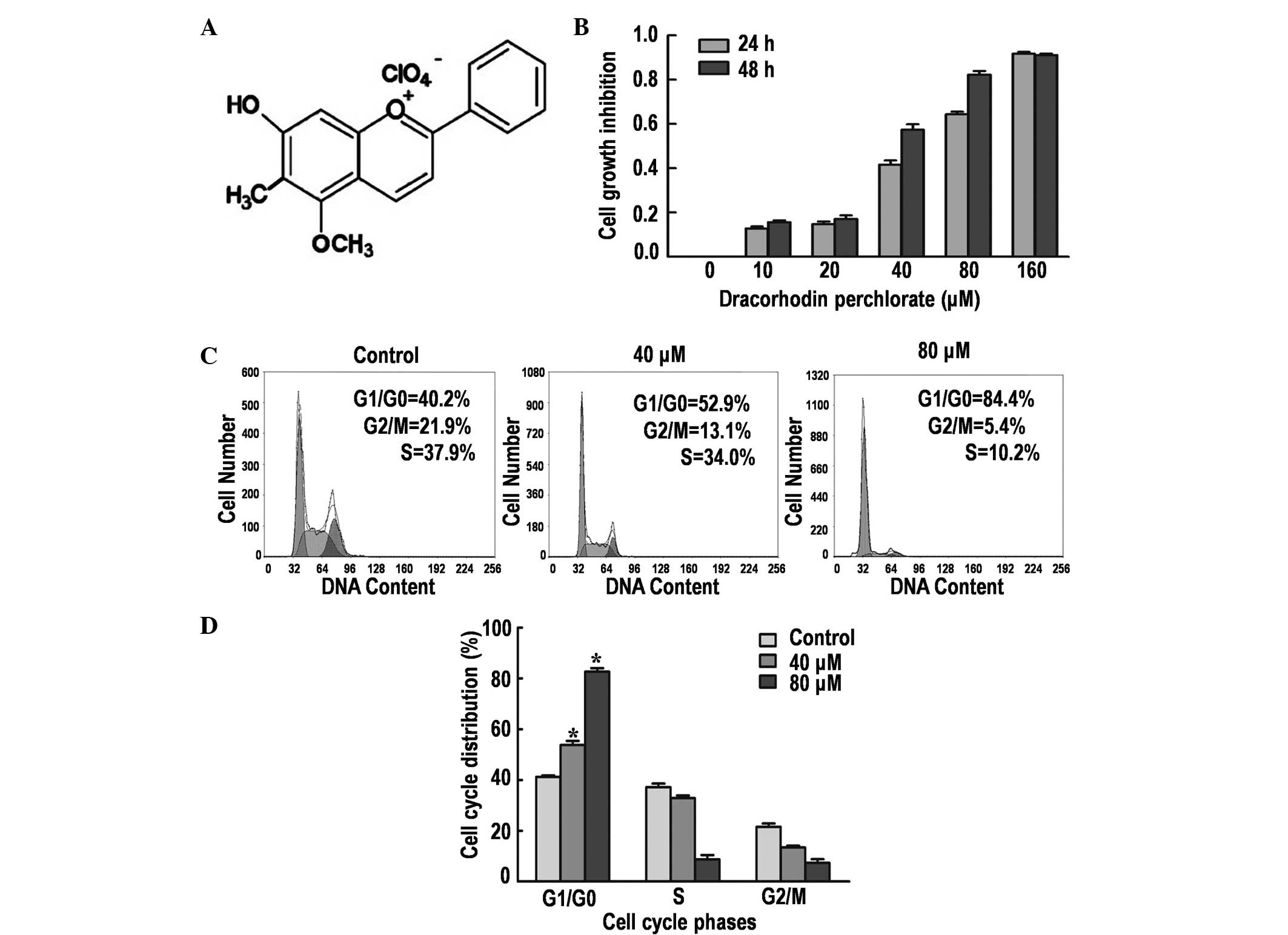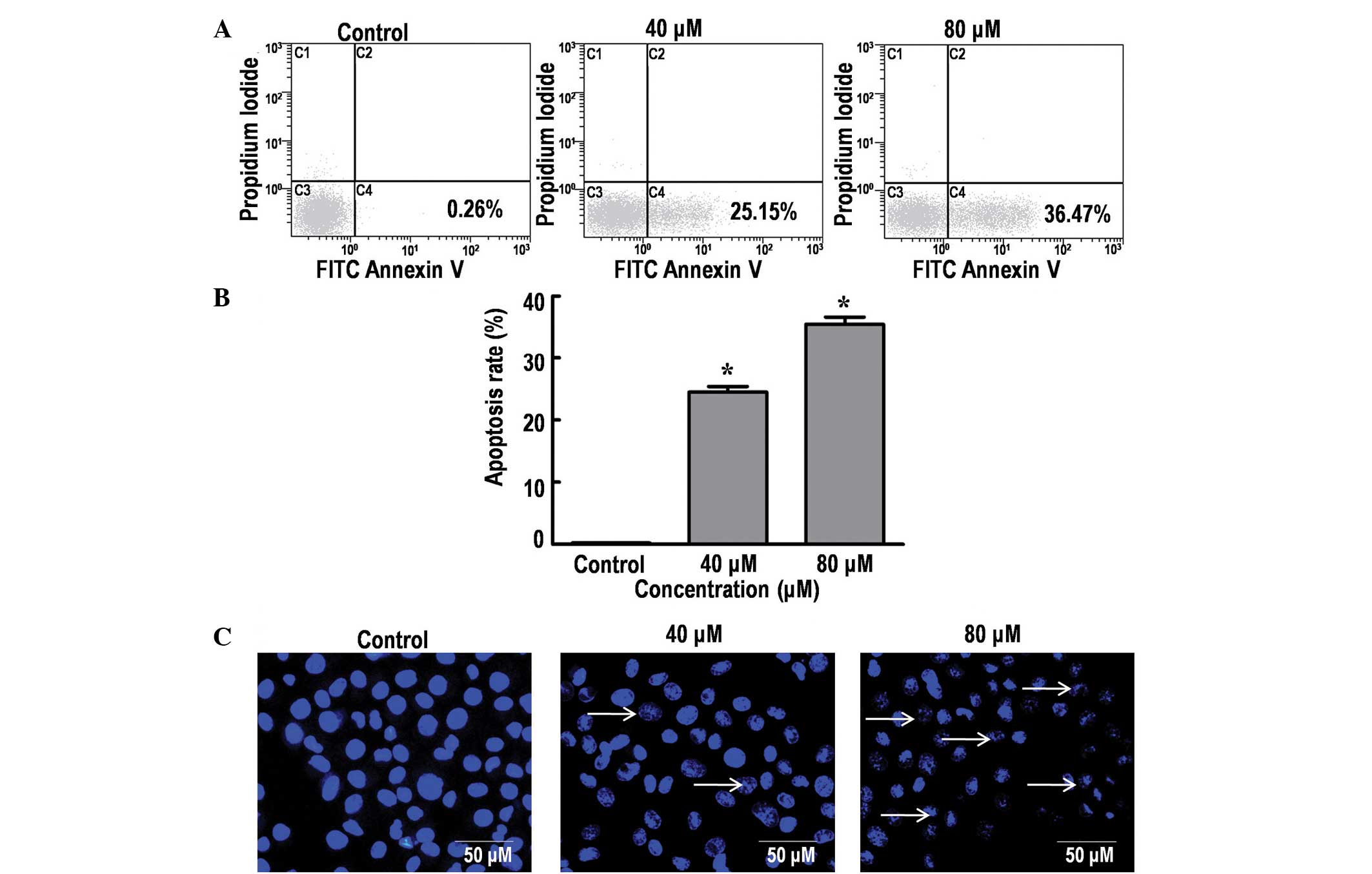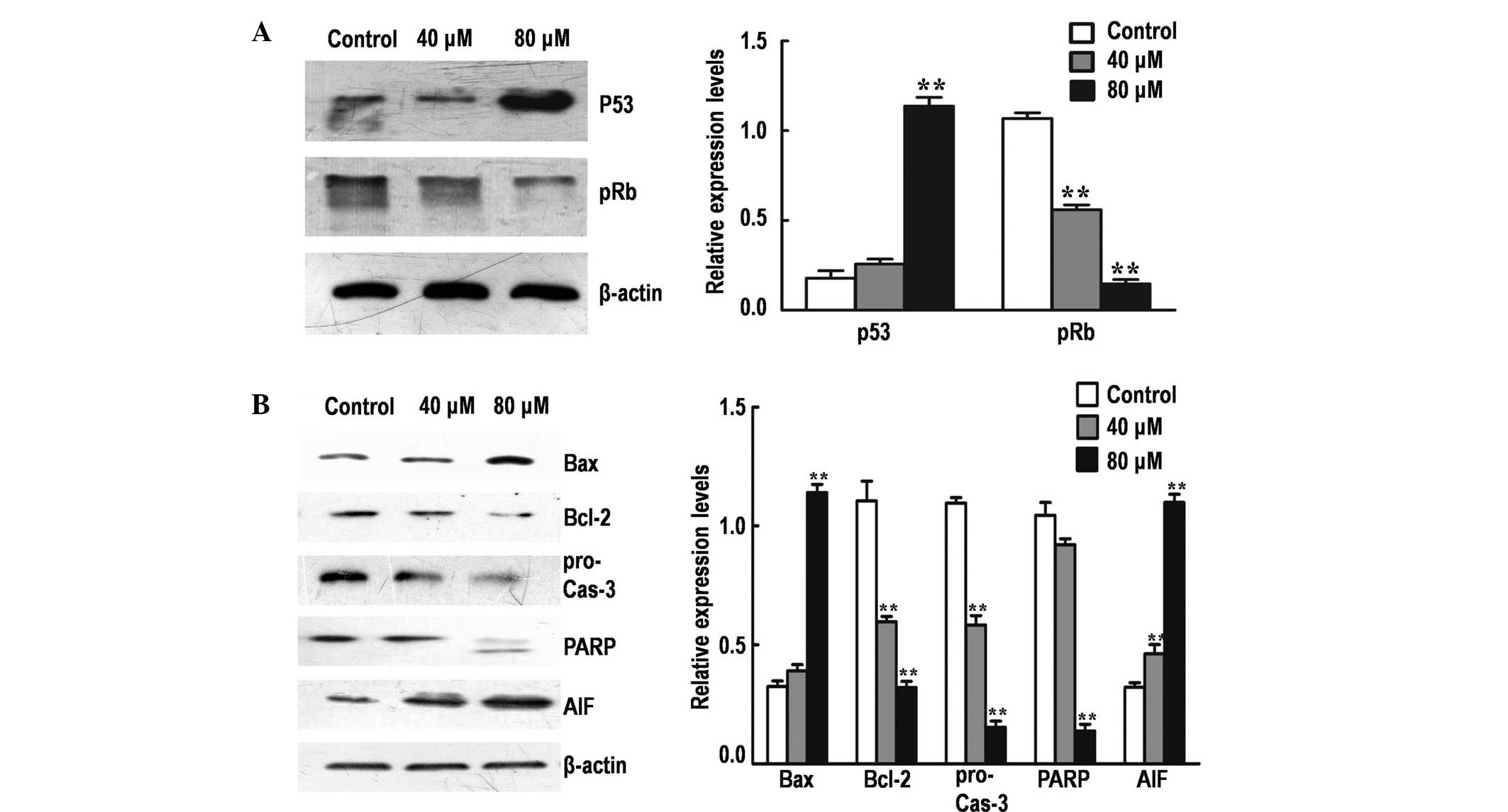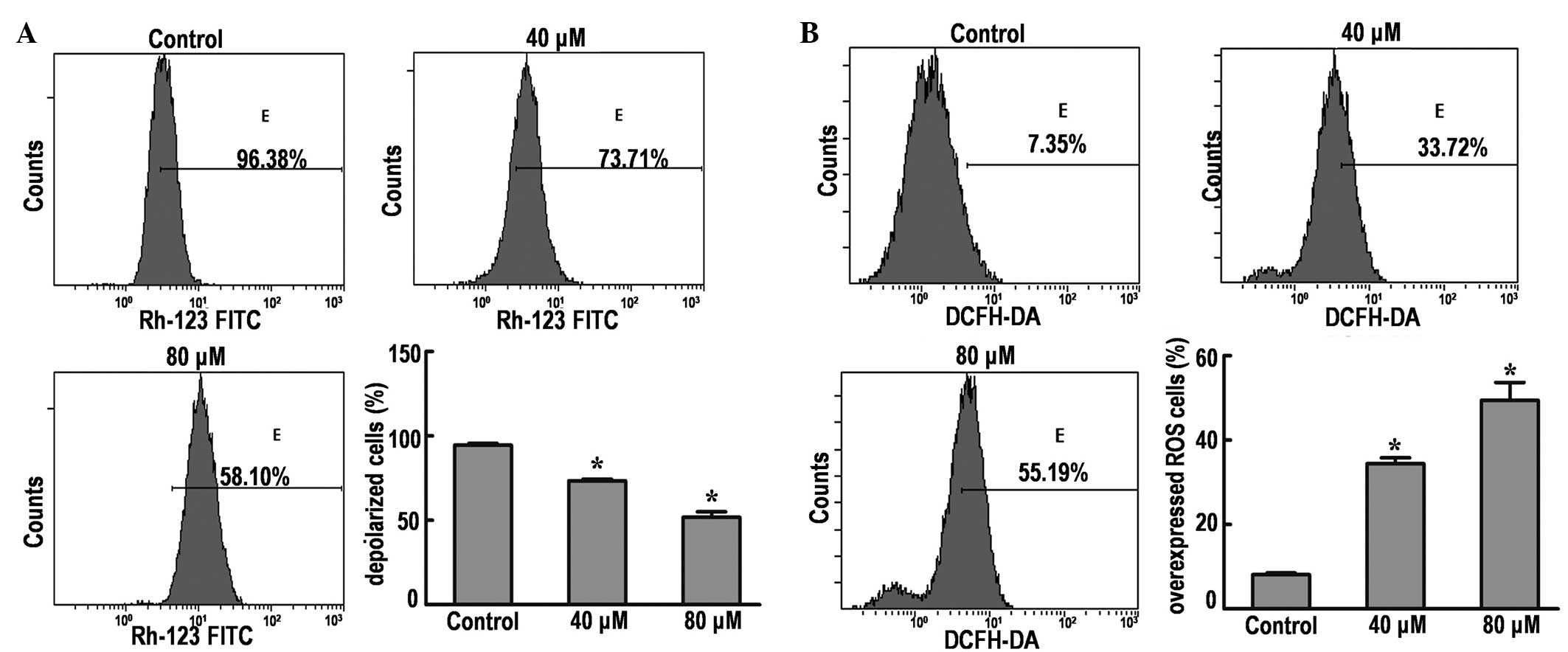|
1
|
Siegel R, Naishadham D and Jemal A: Cancer
statistics, 2013. CA Cancer J Clin. 63:11–30. 2013. View Article : Google Scholar : PubMed/NCBI
|
|
2
|
Johnson DH: Evolution of cisplatin-based
chemotherapy in non-small cell lung cancer: A historical
perspective and the eastern cooperative oncology group experience.
Chest. 117 (4 Suppl 1):133S–137S. 2000. View Article : Google Scholar : PubMed/NCBI
|
|
3
|
Cragg GM and Newman DJ: Plants as a source
of anti-cancer agents. J Ethnopharmacol. 100:72–79. 2005.
View Article : Google Scholar : PubMed/NCBI
|
|
4
|
Amin AR, Kucuk O, Khuri FR and Shin DM:
Perspectives for cancer prevention with natural compounds. J Clin
Oncol. 27:2712–2725. 2009. View Article : Google Scholar : PubMed/NCBI
|
|
5
|
Russo M, Palumbo R, Mupo A, et al:
Flavonoid quercetin sensitizes a CD95-resistant cell line to
apoptosis by activating protein kinase Calpha. Oncogene.
22:3330–3342. 2003. View Article : Google Scholar : PubMed/NCBI
|
|
6
|
Xia MY, Wang MW, Cui Z, et al: Dracorhodin
perchlorate induces apoptosis in HL-60 cells. J Asian Nat Prod Res.
8:335–343. 2006. View Article : Google Scholar : PubMed/NCBI
|
|
7
|
Ferreira CG, Epping M, Kruyt FA and
Giaccone G: Apoptosis: Target of cancer therapy. Clin Cancer Res.
8:2024–2034. 2002.PubMed/NCBI
|
|
8
|
Brockmann H and Junge H: Die konstitution
des dracorhodins, eines neuen farbstoffes aus dem ‘drachenblut’.
Eur J Inorg Chem. 76:751–763. 1943.(In German).
|
|
9
|
Rao GS, Gerhart MA, Lee RT III, et al:
Antimicrobial agents from higher plants. Dragon's blood resin. J
Nat. Prod. 45:646–648. 1982. View Article : Google Scholar : PubMed/NCBI
|
|
10
|
Gao WF, Zheng H, Wang YS, et al: Synthesis
of dracorhodin. Chin J Pharma. 20:247–250. 1989.(In Chinese).
|
|
11
|
Rasul A, Ding C, Li X, et al: Dracorhodin
perchlorate inhibits PI3K/Akt and NF-κB activation, up-regulates
the expression of p53, and enhances apoptosis. Apoptosis.
17:1104–1119. 2012. View Article : Google Scholar : PubMed/NCBI
|
|
12
|
Xia M, Wang M, Tashiro S, Onodera S,
Minami M and Ikejima T: Dracorhodin perchlorate induces A375-S2
cell apoptosis via accumulation of p53 and activation of caspases.
Biol Pharm Bull. 28:226–232. 2005. View Article : Google Scholar : PubMed/NCBI
|
|
13
|
Yu JH, Zheng GB, Liu CY, Zhang LY, Gao HM,
Zhang YH, Dai CY, Huang L, Meng XY, Zhang WY and Yu XF: Dracorhodin
perchlorate induced human breast cancer MCF-7 apoptosis through
mitochondrial pathways. Int J Med Sci. 10:1149–1156. 2013.
View Article : Google Scholar : PubMed/NCBI
|
|
14
|
Xia M, Wang D, Wang M, Tashiro S, Onodera
S, Minami M and Ikejima T: Dracorhodin perchlorate induces
apoptosis via activation of caspases and generation of reactive
oxygen species. J Pharmacol Sci. 95:273–283. 2004. View Article : Google Scholar : PubMed/NCBI
|
|
15
|
Fridman JS and Lowe SW: Control of
apoptosis by p53. Oncogene. 22:9030–9040. 2003. View Article : Google Scholar : PubMed/NCBI
|
|
16
|
Adams JM and Cory S: Life-or-death
decisions by the Bcl-2 protein family. Trends Biochem Sci.
26:61–66. 2001. View Article : Google Scholar : PubMed/NCBI
|
|
17
|
Saelens X, Festjens N, Vande Walle L, van
Gurp M, van Loo G and Vandenabeele P: Toxic proteins released from
mitochondria in cell death. Oncogene. 23:2861–2874. 2004.
View Article : Google Scholar : PubMed/NCBI
|
|
18
|
Porter AG and Jänicke RU: Emerging roles
of caspase-3 in apoptosis. Cell Death Differ. 6:99–104. 1999.
View Article : Google Scholar : PubMed/NCBI
|
|
19
|
Araki M, Iida Y, Taketani S, Watanabe K,
Ohta T and Saito T: Characterization of photoreceptor cell
differentiation in the rat retinal cell culture. Dev Biol.
124:239–247. 1987. View Article : Google Scholar : PubMed/NCBI
|
|
20
|
King KL and Cidlowski JA: Cell cycle
regulation and apoptosis. Annu Rev Physiol. 60:601–617. 1998.
View Article : Google Scholar : PubMed/NCBI
|
|
21
|
Pan J, She M, Xu ZX, et al:
Farnesyltransferase inhibitors induce DNA damage via reactive
oxygen species in human cancer cells. Cancer Res. 65:3671–3681.
2005. View Article : Google Scholar : PubMed/NCBI
|
|
22
|
He Y, Ju W, Hao H, Liu Q, Lv L and Zeng F:
Dracorhodin perchlorate suppresses proliferation and induces
apoptosis in human prostate cancer cell line PC-3. J Huazhong Univ
Sci Technolog Med Sci. 31:215–219. 2011. View Article : Google Scholar : PubMed/NCBI
|
|
23
|
Budram-Mahadeo V, Morris PJ and Latchman
DS: The Brn-3a transcription factor inhibits the pro-apoptotic
effect of p53 and enhances cell cycle arrest by differentially
regulating the activity of the p53 target genes encoding Bax and
p21(CIP1/Waf1). Oncogene. 21:6123–6131. 2002. View Article : Google Scholar : PubMed/NCBI
|
|
24
|
Vogelstein B, Lane D and Levine AJ:
Surfing the p53 network. Nature. 408:307–310. 2000. View Article : Google Scholar : PubMed/NCBI
|
|
25
|
Das SK, Hashimoto T, Shimizu K, et al:
Fucoxanthin induces cell cycle arrest at
G0/G1 phase in human colon carcinoma cells
through up-regulation of p21WAF1/Cip1. Biochim Biophys Acta.
1726:328–335. 2005. View Article : Google Scholar : PubMed/NCBI
|
|
26
|
Huang DC and Strasser A: BH3-Only
proteins-essential initiators of apoptotic cell death. Cell.
103:839–842. 2000. View Article : Google Scholar : PubMed/NCBI
|
|
27
|
Frenzel A, Grespi F, Chmelewskij W and
Villunger A: Bcl2 family proteins in carcinogenesis and the
treatment of cancer. Apoptosis. 14:584–596. 2009. View Article : Google Scholar : PubMed/NCBI
|
|
28
|
Danial NN: BCL-2 family proteins: critical
checkpoints of apoptotic cell death. Clin Cancer Res. 13:7254–7263.
2007. View Article : Google Scholar : PubMed/NCBI
|
|
29
|
Schuler M, Bossy-Wetzel E, Goldstein JC,
et al: p53 induces apoptosis by caspase activation through
mitochondrial cytochrome c release. J Biol Chem. 275:7337–7342.
2000. View Article : Google Scholar : PubMed/NCBI
|
|
30
|
Toshiyuki M and Reed JC: Tumor suppressor
p53 is a direct transcriptional activator of the human bax gene.
Cell. 80:293–299. 1995. View Article : Google Scholar : PubMed/NCBI
|
|
31
|
Greiner M, Cárdenas S, Parra C, et al:
Adrenalectomy regulates apoptotic-associated genes in rat
hippocampus. Endocrine. 15:323–333. 2001. View Article : Google Scholar : PubMed/NCBI
|
|
32
|
Slee EA, Adrain C and Martin SJ:
Executioner caspase −3, −6, and −7 perform distinct, non-redundant
roles during the demolition phase of apoptosis. J Biol Chem.
276:7320–7326. 2001. View Article : Google Scholar : PubMed/NCBI
|
|
33
|
Norberg E, Orrenius S and Zhivotovsky B:
Mitochondrial regulation of cell death: processing of
apoptosis-inducing factor (AIF). Biochem Biophys Res Commun.
396:95–100. 2010. View Article : Google Scholar : PubMed/NCBI
|
|
34
|
Candé C, Cohen I, Daugas E, et al:
Apoptosis-inducing factor (AIF): a novel caspase-independent death
effector released from mitochondria. Biochimie. 84:215–22. 2002.
View Article : Google Scholar : PubMed/NCBI
|
|
35
|
Kroemer G: The proto-oncogene Bcl-2 and
its role in regulating apoptosis. Nat Med. 3:614–620. 1997.
View Article : Google Scholar : PubMed/NCBI
|
|
36
|
Johnson TM, Yu ZX, Ferrans VJ, et al:
Reactive oxygen species are downstream mediators of p53-dependent
apoptosis. Proc Natl Acad Sci USA. 93:11848–11852. 1996. View Article : Google Scholar : PubMed/NCBI
|
|
37
|
Cai J and Jones DP: Mitochondrial redox
signaling during apoptosis. J Bioenerg Biomembr. 31:327–334. 1999.
View Article : Google Scholar : PubMed/NCBI
|
|
38
|
Simon HU, Haj-Yehia A and Levi-Schaffer F:
Role of reactive oxygen species (ROS) in apoptosis induction.
Apoptosis. 5:415–418. 2000. View Article : Google Scholar : PubMed/NCBI
|
|
39
|
Akgul C, Moulding DA and Edwards SW:
Molecular control of neutrophil apoptosis. FEBS Lett. 487:318–322.
2001. View Article : Google Scholar : PubMed/NCBI
|
|
40
|
Cimino F, Esposito F, Ammendola R and
Russo T: Gene regulation by reactive oxygen species. Curr Top Cell
Regul. 35:123–148. 1997.PubMed/NCBI
|


















